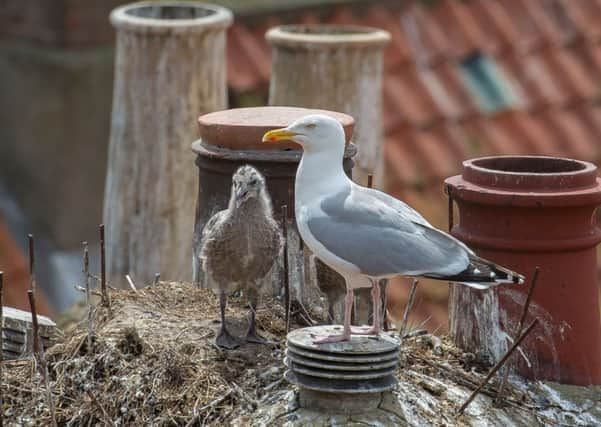Call for reform after culling licences lead to ‘unrestricted’ killings


Robin “red breasts”, blue tits, deer, pigeons and geese are also among the species where licences were approved for them to be killed, it has emerged. The list includes threatened species which have been “red listed” by conservation groups.
Pheasants, magpies, skylarks, geese and blackbirds were also among those targeted.
Advertisement
Hide AdAdvertisement
Hide AdCulling is a widely accepted necessity in rural Scotland to protect crops and control pests.
The species were set out by Natural Environment minister Mairi Gougeon in a parliamentary response to Greens MSP Alison Johnstone.
It is largely birds which are affected by the licences, with buzzards, seagulls, house martins and swans also listed.
The RSPB has warned that the broader licencing regime in Scotland needs to be overhauled and says a consultation being launched on the issue later this year should bring about change.
A spokeswoman said: “We believe that the current general licence system in Scotland, which allows unrestricted and unmonitored killing of species such as crows, rooks and jays, is no longer fit for purpose.
“We believe a future system should be based on scientific and objective evidence that licensed killing is necessary for legal, valid and specified purposes, will achieve the specified purpose, is humane and is not licensed when non-lethal alternatives are available and can succeed.”
Scottish Natural Heritage, which issues licences, is to carry out the consultation on general licences amid growing concerns over the current system.
“We will be feeding into that process when it is launched and hope that positive changes will be made as a result of the consultation,” the RSPB spokeswoman added.
Advertisement
Hide AdAdvertisement
Hide AdBut she said the body accepts that in some circumstances and as a “last resort” lethal control of birds needs to be employed for specific purposes.
Among the “red listed” birds – classed as needing urgent conservation action –for which cull licences were granted for in Scotland last year were grey partridges, herring gulls, house sparrows, skylarks and starlings.
The species which saw the highest number of licences granted for their “lethal control” last year were deer with 580 granted. There were 211 licences granted for geese of various breeds and 138 for ravens.
Some licences limit the number of birds that can be culled, while others allow for people to kill indefinite numbers.
Two licences for brown hares were issued for “as many as required” relating to airport safety. Culls were also granted for Powan, a freshwater fish with naturally occurring habitats in Loch Lomond and Loch Eck in Argyll, and the common lizard. These were for the purpose of science, research and education. Licences to cull animals are provided under the Wildlife and Countryside Act.
Among the reasons for granting them are to prevent damage to farmers’ crops and protect their livelihoods, to avoid bird strikes on aircraft at airports, and for health and safety grounds.
Other examples include when a bird nesting inside a boiler in a house can cause a dangerous build-up of carbon monoxide, or when birds are trapped inside food retail premises and are fouling on the produce.
A Scottish Natural Heritage spokeswoman said: “In many cases, only the nest and eggs of these birds are taken and the adult birds go on to nest elsewhere. In other cases and whenever possible, the birds are captured and released unharmed.
Advertisement
Hide AdAdvertisement
Hide Ad“Sometimes the licence applicant will request the ability to use lethal control as a last resort. This is typically in the cases where birds cannot be easily moved from inside large buildings – such as a supermarket – and where the birds are unlikely to naturally find their way outside. Scottish Natural Heritage works to strike a balance between conserving and protecting species and these other public interests when making licensing decisions.
“We are confident that all activities carried out under these licences do not affect the conservation status of any of our native species, and none of the licences issued relate to endangered species.”
Scottish Land & Estates, the body which represents much of Scotland’s major landowners said culling is necessary for a range of reasons.
“Licences are issued to land managers involved in activities such as farming, wildlife conservation, forestry and moorland management for a variety of purposes within those sectors,” a spokesman said.
“This is frequently to protect livestock, crops, young trees or other wildlife.”
The RSPB call comes amid separate concerns over illegal culls in Scotland, after about 100 dead birds believed to be young ravens or crows, were found dumped at Loch Freuchie last week.
The discovery has been reported to police for further investigation.